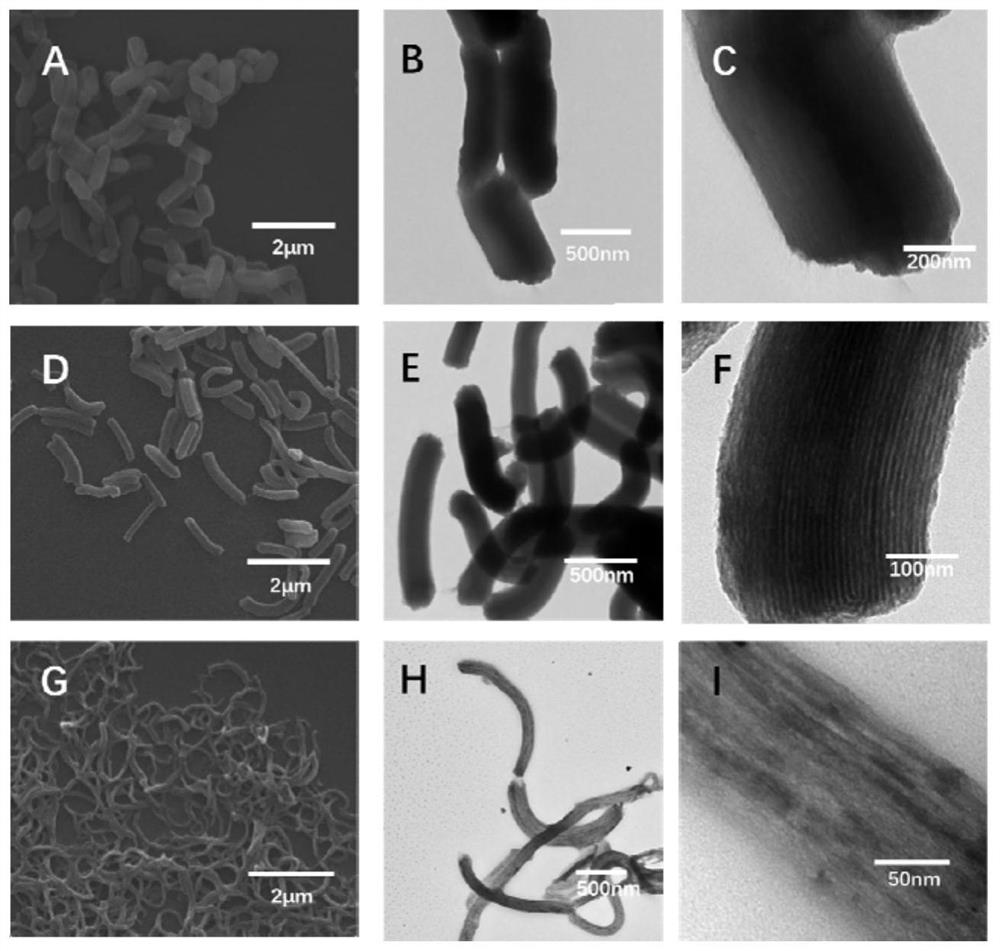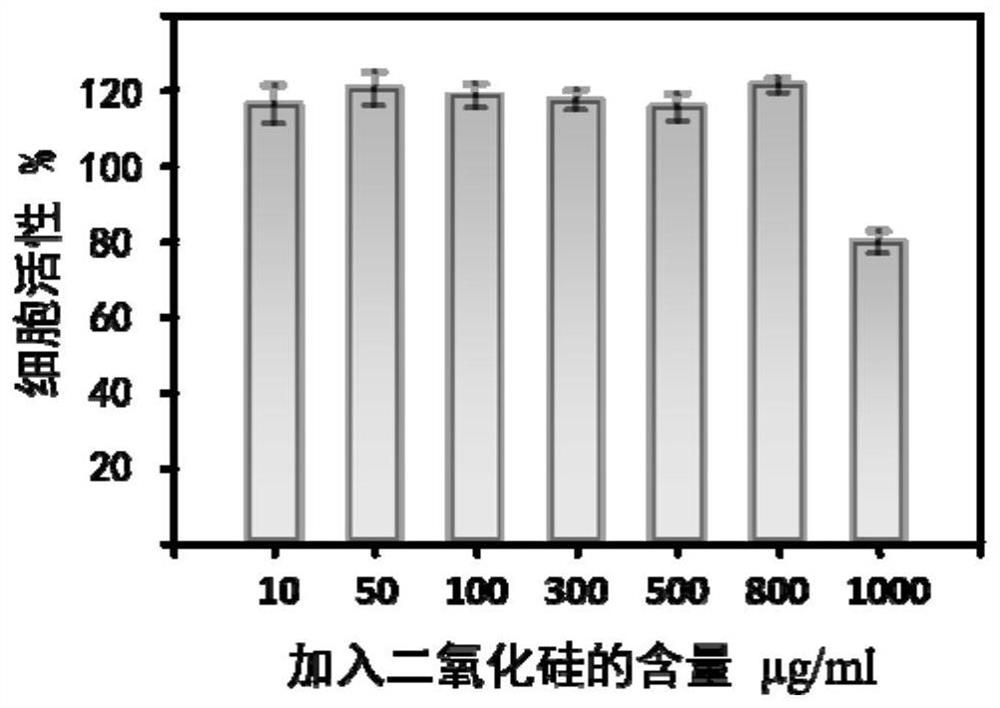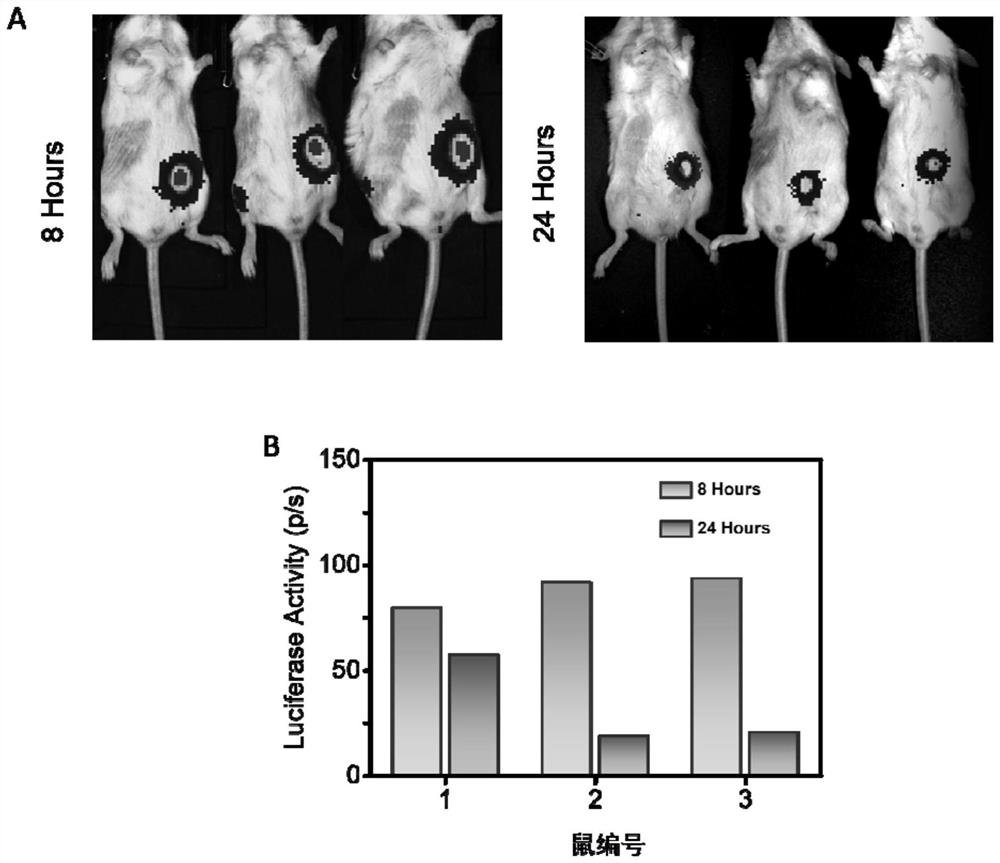A kind of silica nanometer gene delivery system and its preparation method and application
A technology of silica and nanomaterials, applied in the biological field, can solve the problems of few reports of successful DNA transfection, and achieve the effect of simple and easy preparation method, smaller tumor burden and obvious therapeutic effect
- Summary
- Abstract
- Description
- Claims
- Application Information
AI Technical Summary
Problems solved by technology
Method used
Image
Examples
Embodiment 1
[0033] Example 1: Synthesis of rod-shaped silica with an aspect ratio of 2.5
[0034] In a typical synthesis, tetraethyl orthosilicate (TEOS) was introduced using the block copolymer Pluronic P123 diluted in an acidic aqueous medium as a template. By controlling the concentration of the reactants and optimizing the reaction conditions, the rod-shaped silica is obtained. The specific method is as follows: 0.8g Pluronic P123 was dissolved in 30ml 2M HCl, and 1.72g TEOS was added dropwise. At this time, the concentrations of P123 and TEOS in the solution were 2.67% and 5.73%, respectively. After uniform stirring for 10 minutes, transfer the solution to a microwave digestion apparatus, react at 40°C for 2 hours, and react at 100°C for 1 hour. The obtained precipitated product was collected by centrifugation, using an ethanol solution containing 1% HCl, and then reacted for 1 hour at an environment of 80 degrees using a microwave digestion instrument to remove the template in the ...
Embodiment 2
[0035] Example 2: Synthesis of rod-shaped silica with an aspect ratio of 6.4
[0036] 0.168g of Pluronic P123 was dissolved in 30ml of 2M HCl, and 0.35g of TEOS was added dropwise. At this time, the concentrations of P123 and TEOS in the solution were 0.56% and 1.17%, respectively. After uniform stirring for 10 minutes, transfer the solution to a microwave digestion apparatus, react at 40°C for 2 hours, and react at 100°C for 1 hour. The obtained precipitated product was collected by centrifugation, using an ethanol solution containing 1% HCl, and then reacted for 1 hour at an environment of 80 degrees using a microwave digestion instrument to remove the template in the product, washed the product several times with ethanol, and finally stored in 4 degrees ethanol solution. The appearance characteristics of the product were characterized and analyzed by transmission electron microscopy, and mesoporous nanorods with a length of 1.78 μm and a width of 278 nm were obtained.
Embodiment 3
[0037] Example 3: Synthesis of silica nanowires with an aspect ratio of 21.4
[0038]0.08g of Pluronic P123 was dissolved in 30ml of 2M HCl, and 0.17g of TEOS was added dropwise. At this time, the concentrations of P123 and TEOS in the solution were 0.27% and 0.57%, respectively. After uniform stirring for 10 minutes, transfer the solution to a microwave digestion apparatus, react at 40°C for 2 hours, and react at 100°C for 1 hour. The obtained precipitated product was collected by centrifugation, using an ethanol solution containing 1% HCl, and then reacted for 1 hour at an environment of 80 degrees using a microwave digestion instrument to remove the template in the product, washed the product several times with ethanol, and finally stored in 4 degrees ethanol solution. The appearance characteristics of the product were characterized and analyzed by transmission electron microscopy, and mesoporous nanowires with a length of 1.80 μm and a width of 84 nm were obtained.
PUM
| Property | Measurement | Unit |
|---|---|---|
| length | aaaaa | aaaaa |
| width | aaaaa | aaaaa |
| length | aaaaa | aaaaa |
Abstract
Description
Claims
Application Information
 Login to View More
Login to View More - R&D Engineer
- R&D Manager
- IP Professional
- Industry Leading Data Capabilities
- Powerful AI technology
- Patent DNA Extraction
Browse by: Latest US Patents, China's latest patents, Technical Efficacy Thesaurus, Application Domain, Technology Topic, Popular Technical Reports.
© 2024 PatSnap. All rights reserved.Legal|Privacy policy|Modern Slavery Act Transparency Statement|Sitemap|About US| Contact US: help@patsnap.com










